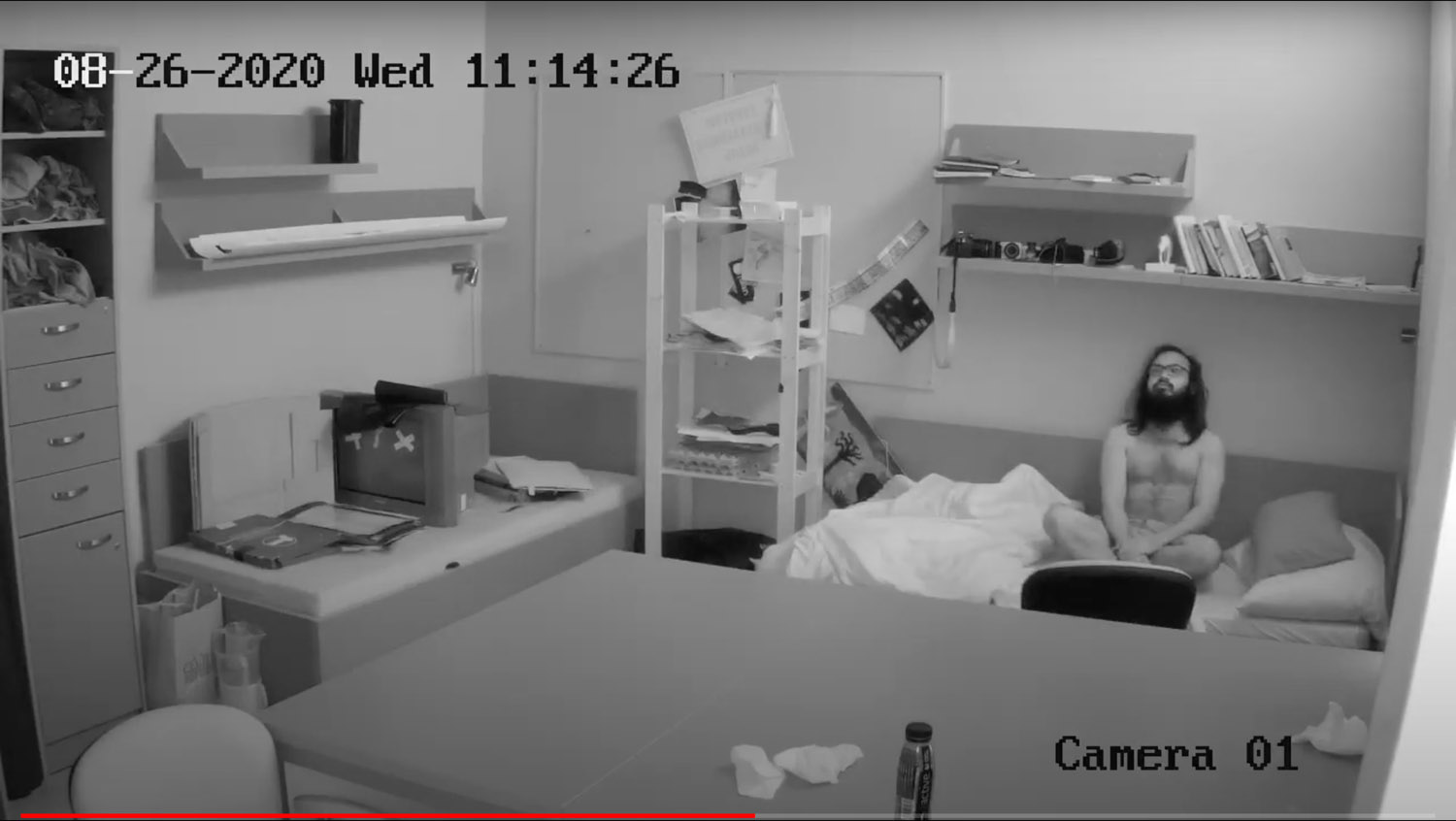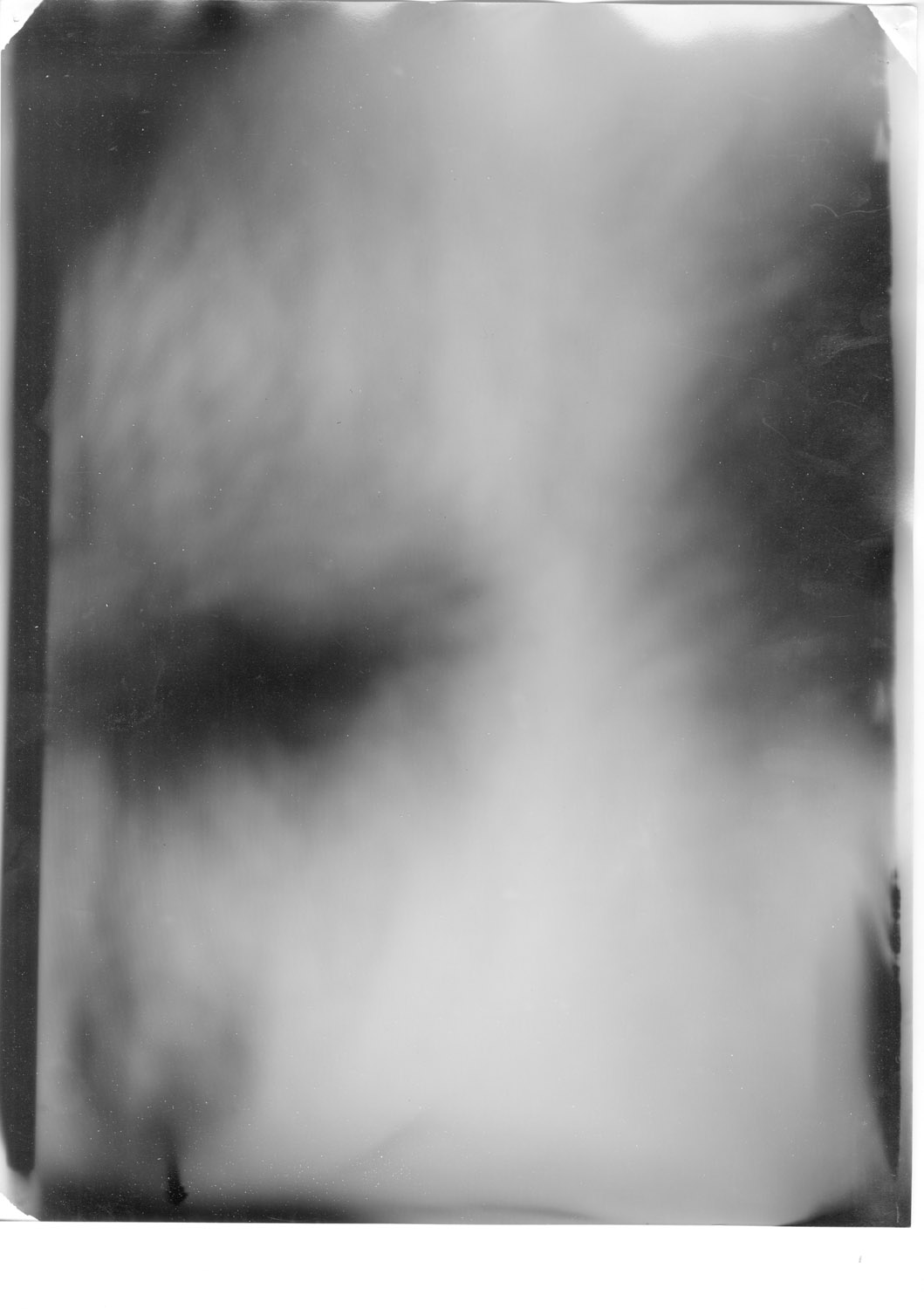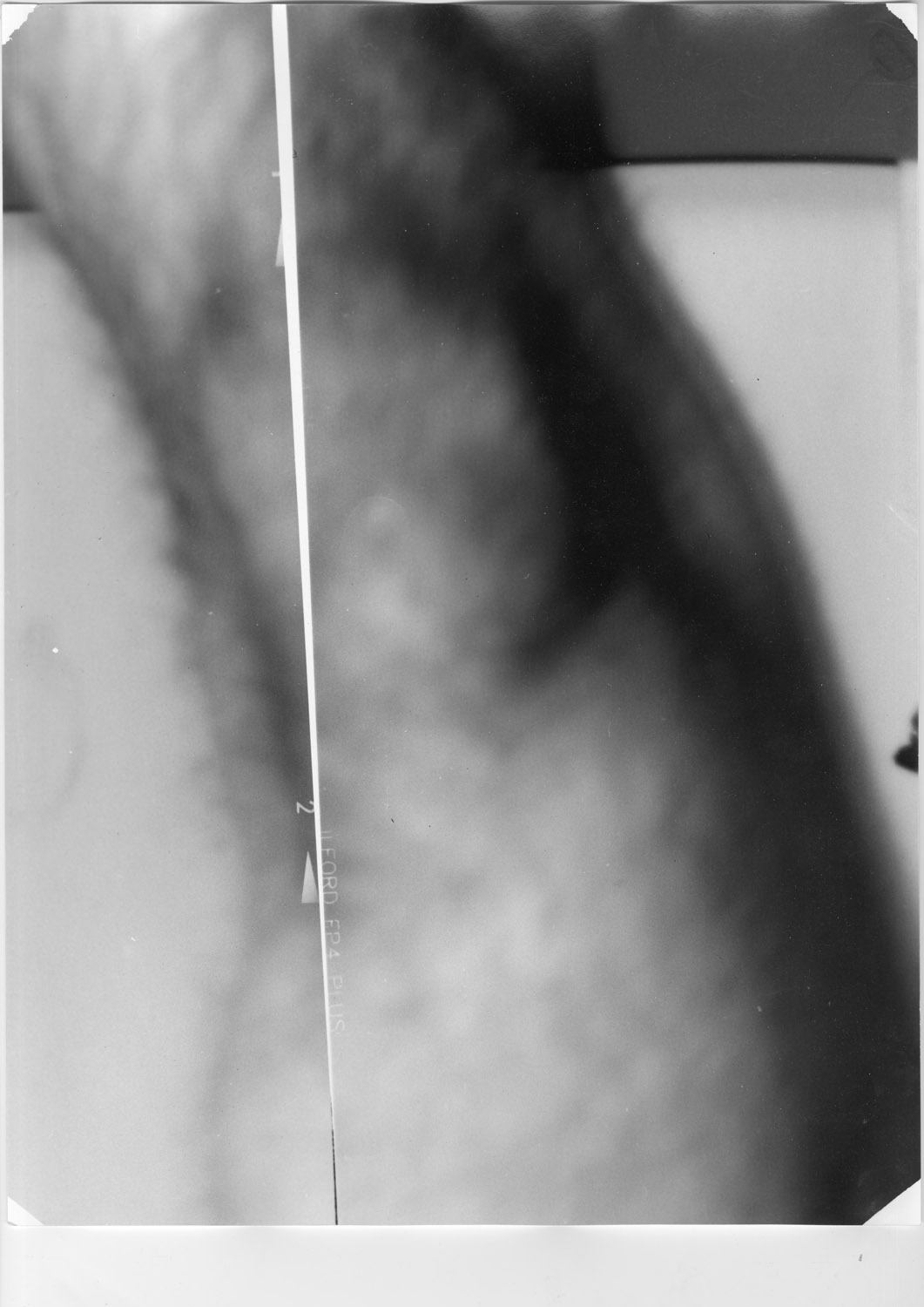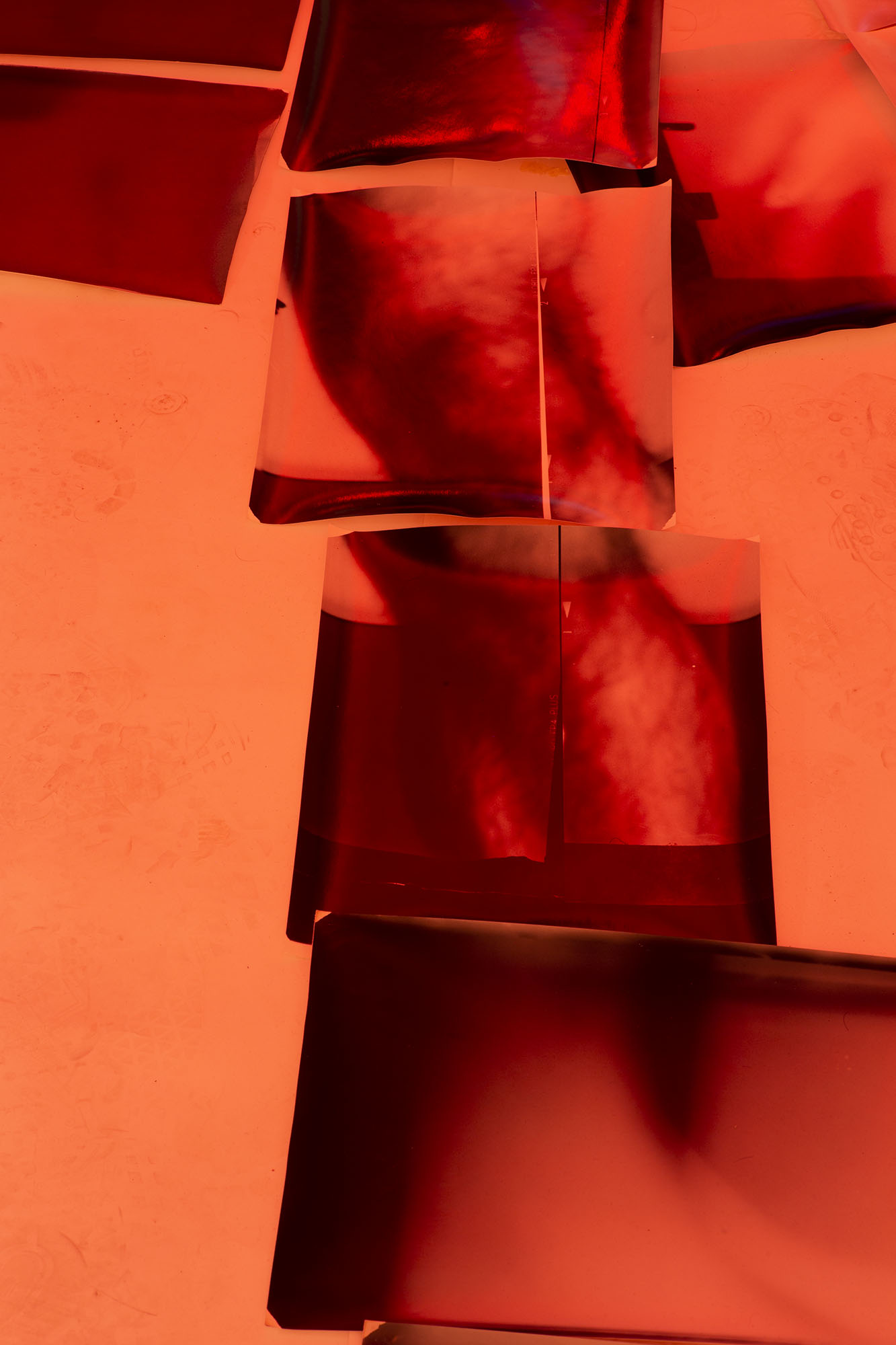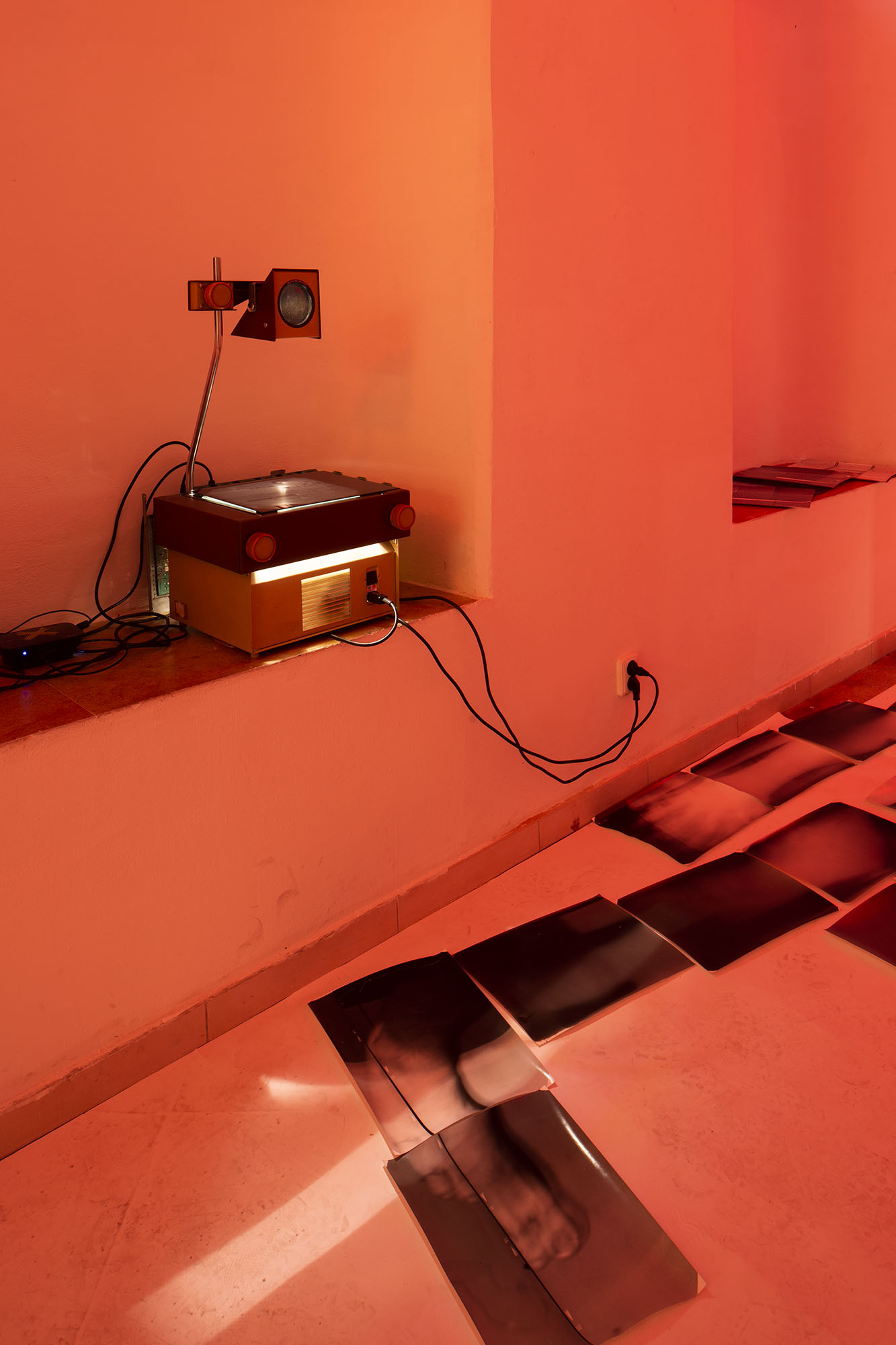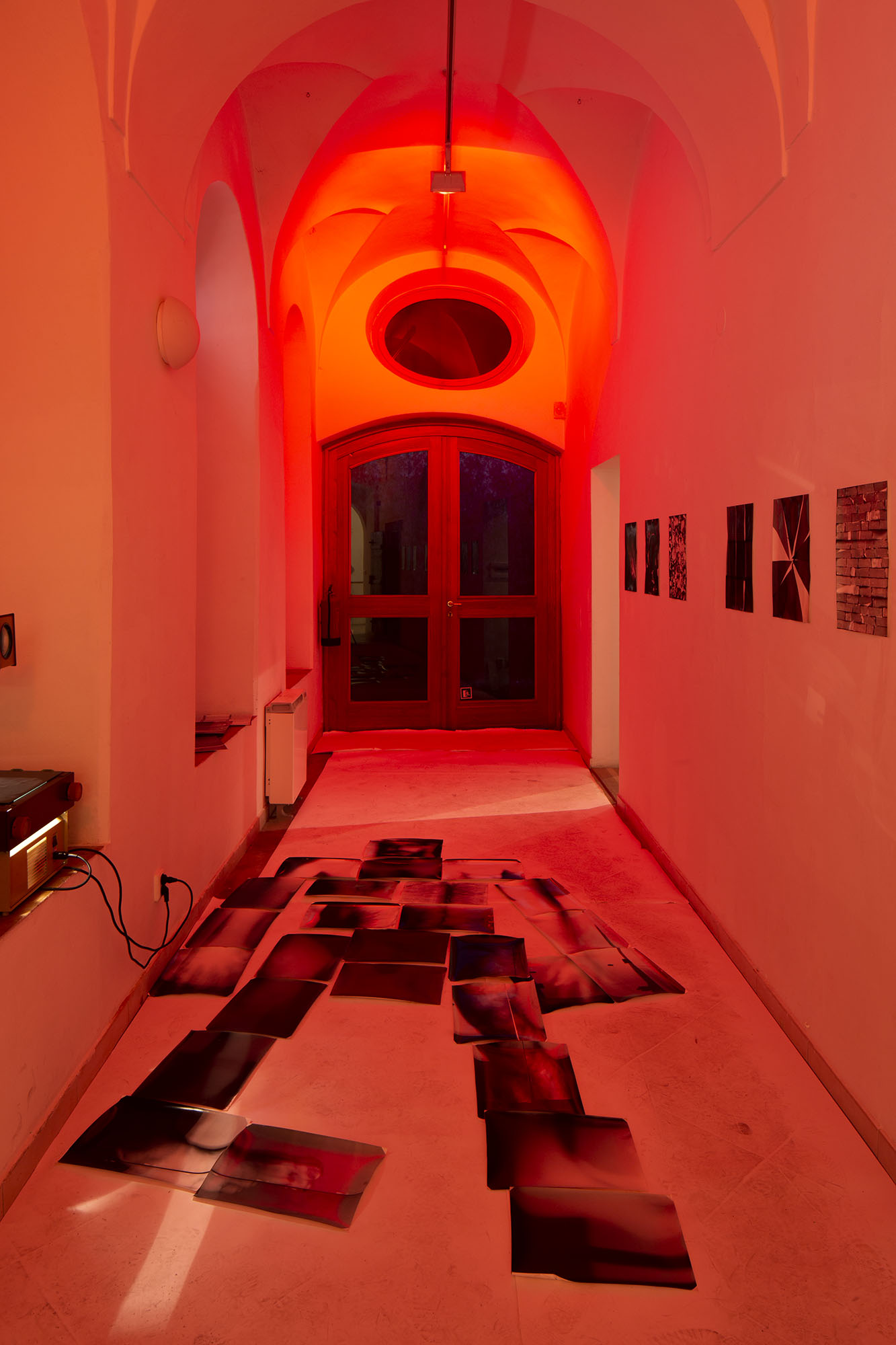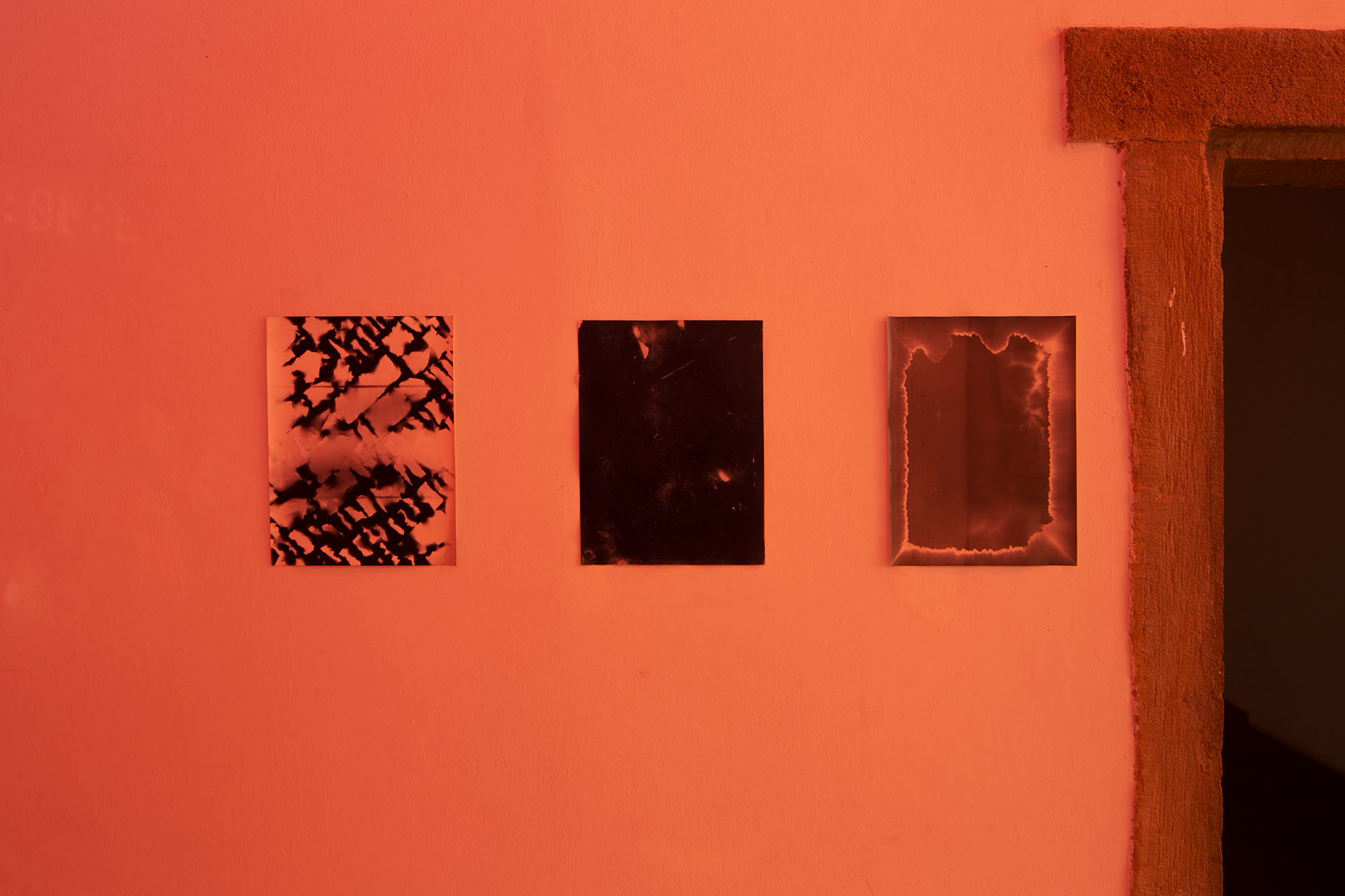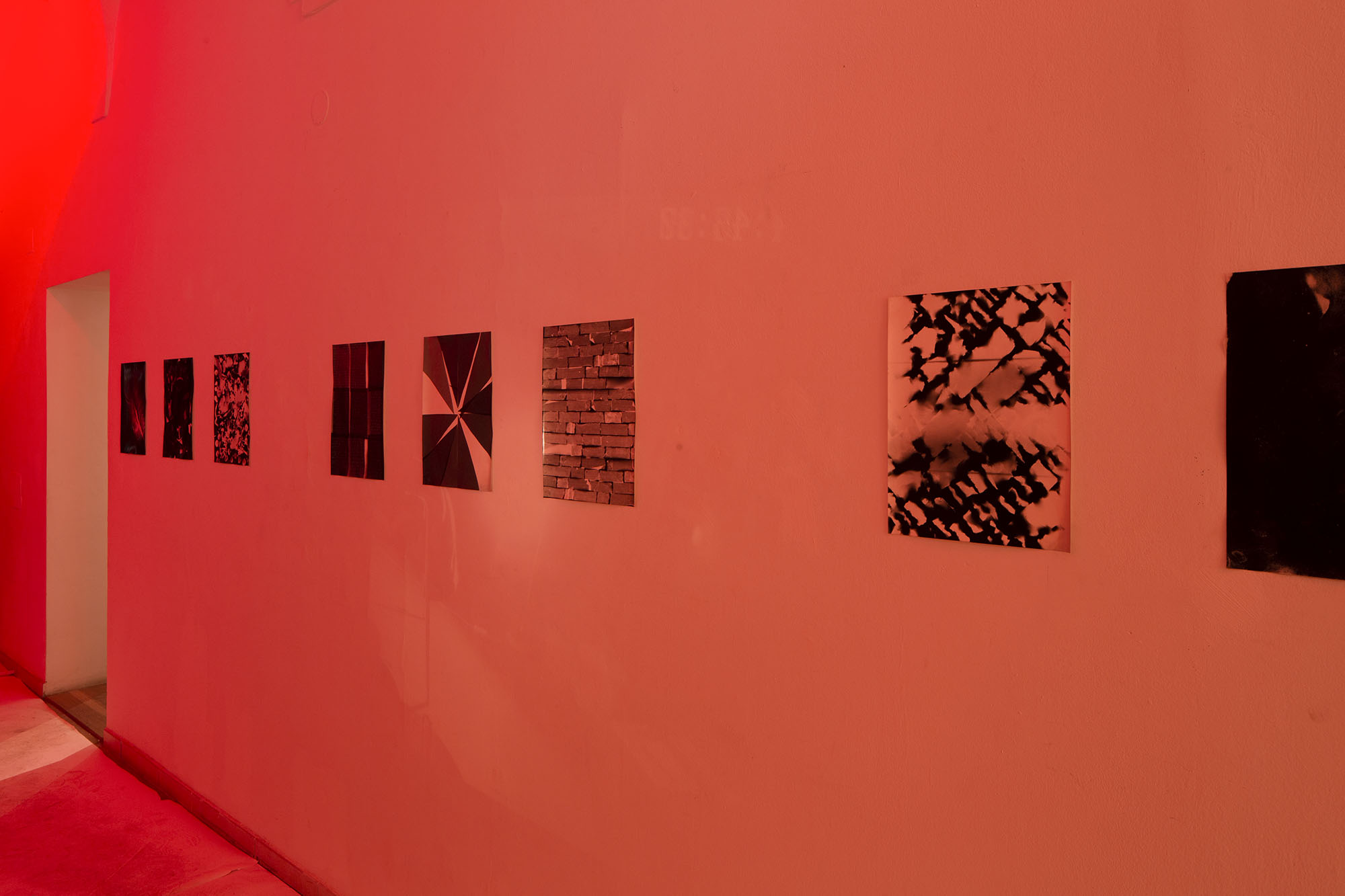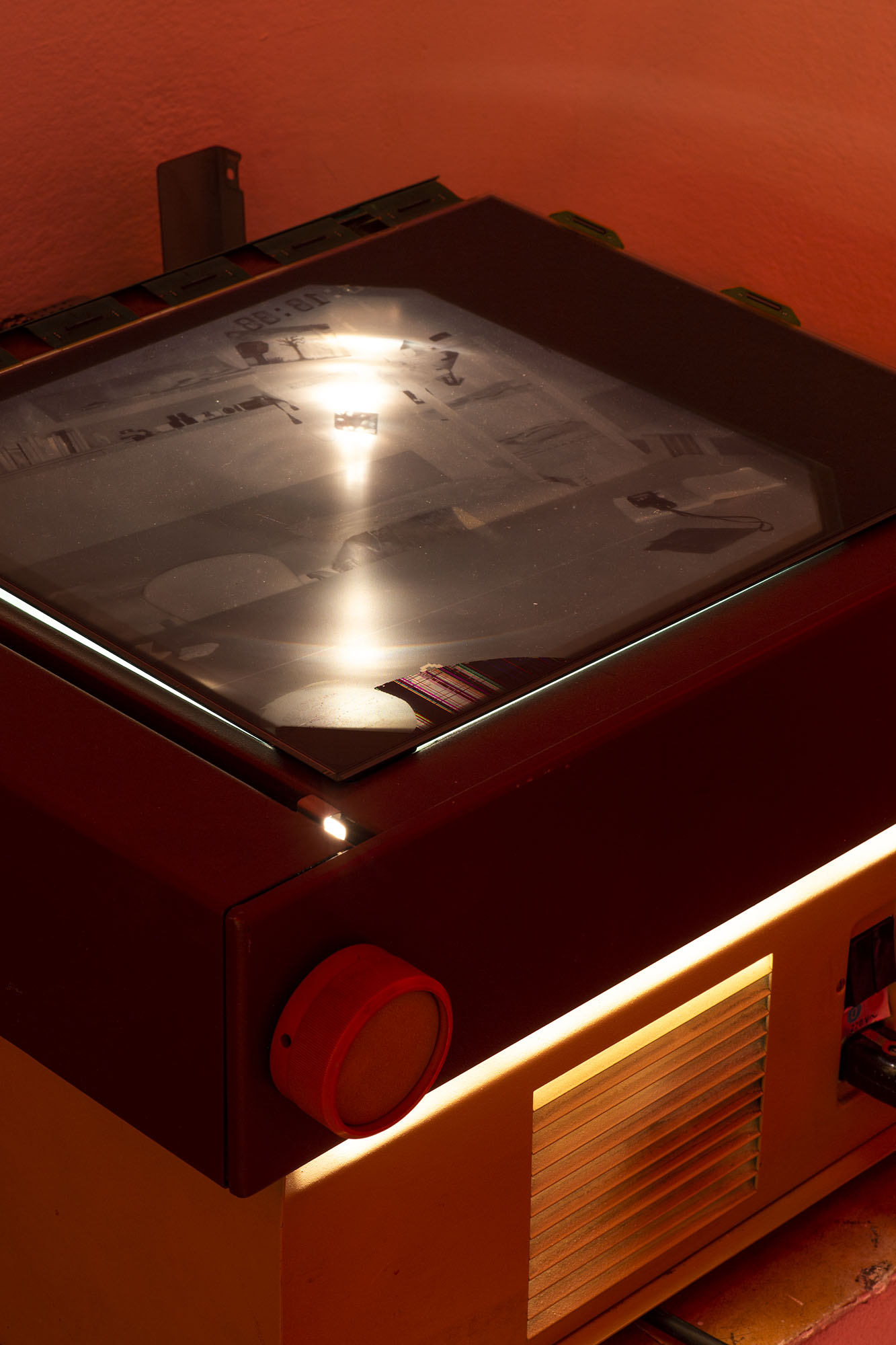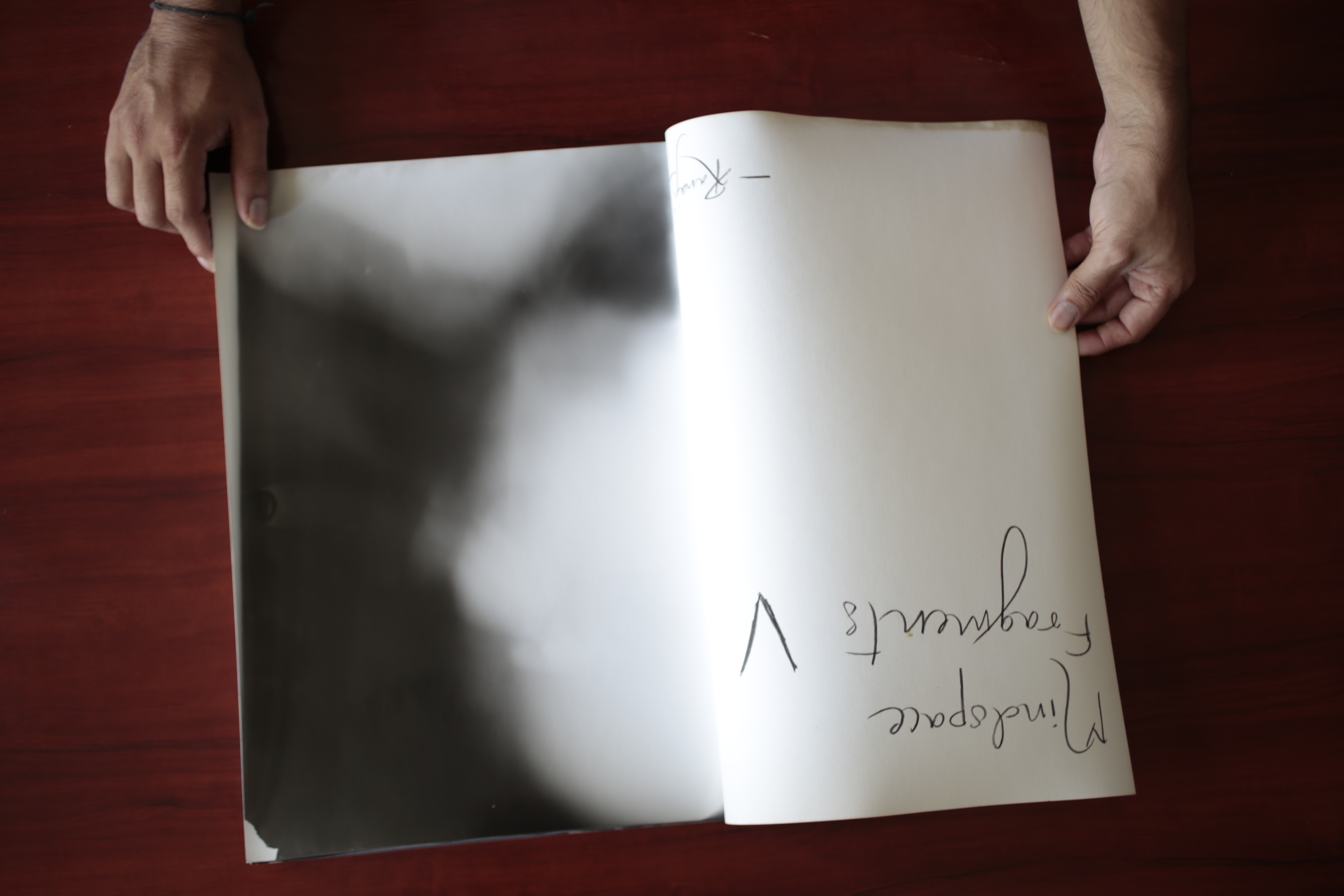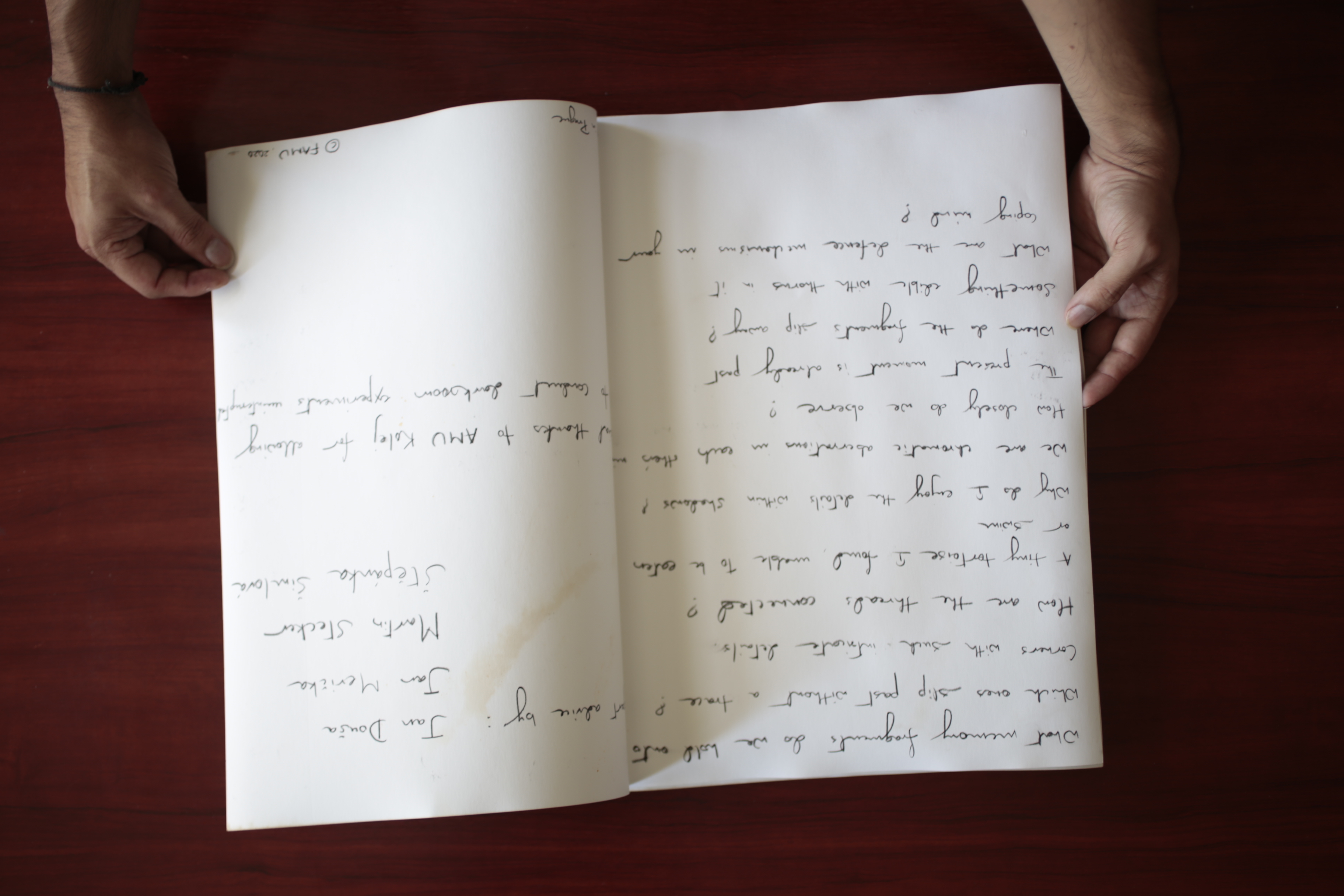Vipaśyanā
0247-01-01-FAMU
https://drive.google.com/file/
V2_3 (Stitched Clip).mp4
Vipaśyanā ~ विपश्यना
Darkroom experiments, Camera obscura and meotar projected silver gelatin prints 30 x 40 cm
Seeing clearly through darkness is as much an act of faith as living in today’s hyperconnected society. Why do we feel disconnected even though the world has shrunk due to connectivity? Do we isolate ourselves (un)knowingly? Defining the intention to renounce society has been prominent in certain cultures and assigned positive and negative connotations. Through Vedic times the idea of vipaśyanā and sányasā where a person renounces all materialistic possessions or familial bonds has a favourable disposition. While the isolation by people following Hikikomori in current Japanese culture has a direct correlation to suicide and is labelled as taboo. This duality of detachment and presence is further explored and contrasted with the constant play of negative to positive (thoughts) inside a darkroom. It is paradoxical that we start seeing clearly in the dark(room), while being in complete isolation from all social interactions.
This experiment of voluntarily locked within the confines of a photographic darkroom for ten days to analyze what (or who) comes out, is divided in two parts. The first part deals with detachment from society while being obsessively attached to making a mental image from negative to positive. The second part explores the concept of being present with my own thoughts in its most basic form; portraying a contrast between self exploration vis à vis self exploitation. The disciplinary form of society of our past versus the contemporary achievement led society; leads to an involuntary form of self exploitation and pursuit of happiness. As a result instead of identifying and acknowledging the existence of a dynamic range of emotions, we often end up alienating ourselves. Even the loose usage of categorizing people as “they” is one form of manifesting subconscious verbal distancing. If being in competition with our own self is something to strive towards, then the hyper in ‘hyperconnection’ becomes a step towards prevailing form of hectic nervousness; while ‘hyperactivity’ represents massification of positivity. Such grey shades of our lives will hopefully come to light through ten day voluntary darkroom experiments.
The chosen medium of expression is paper since it is uniquely positioned in our constructed value system. It is a material that is discarded without a second thought while simultaneously being revered. Making impressions of discarded memories and objects which surrounded me through this experiment is meant to personify paper as an entity that is chronicler of knowledge. The image(s) formed by projection as a metaphor for construction of identities through the influence of environment, thoughts, people, possessions, consumption and actions. At each present moment what do we hold onto and what do we choose to sacrifice?
Kniha Mindspace Fragments V
What do we choose to fill those empty spaces
in our minds? This was one of the questions
which filled mine, as I thought about spending
ten days detached from societyand obsessing
over creating imprints of memories and discarded
objects around me. It was difficult to
remember the day and date without reverse
calculating. The dreams became increasingly
vivid and maintaining a journal allowed me
to have an anchor point amidst the downward
spiral of my thoughts. The dreams I had
throughout these ten days of detachment had
a common element that reoccurred across
scenarios – I would identify a powerful moment
to compose an image; however the
circumstances, people, my own inadequacies
or willingness would prevent me from doing
so. These compiled photograms which allude
to fragmented memories are made through an
old overhead projector, which felt like it was
the only source of light around darkness for
me to hold onto…


